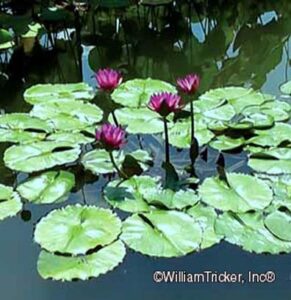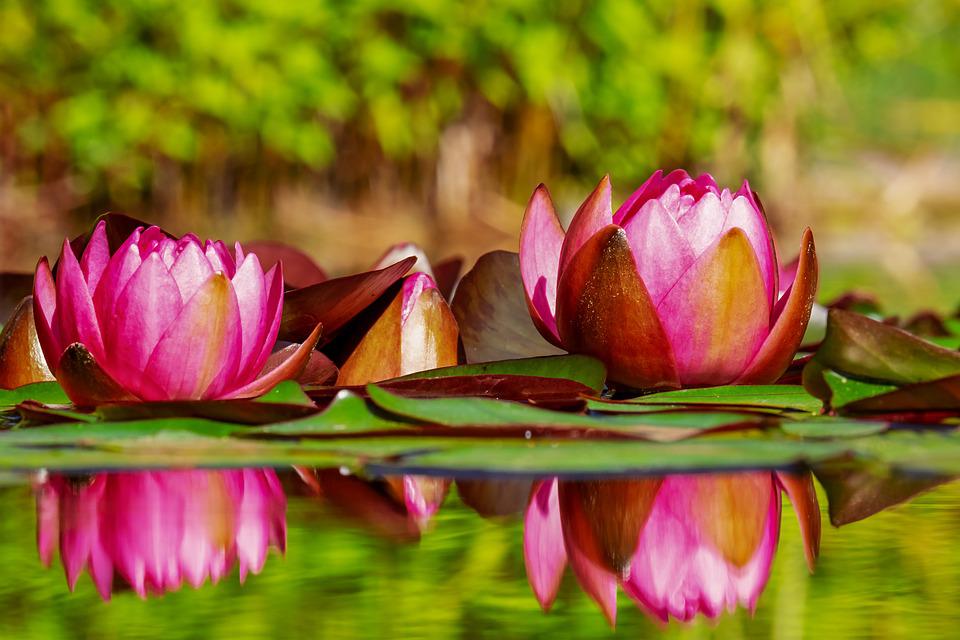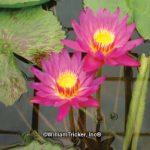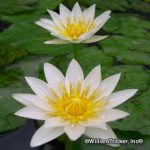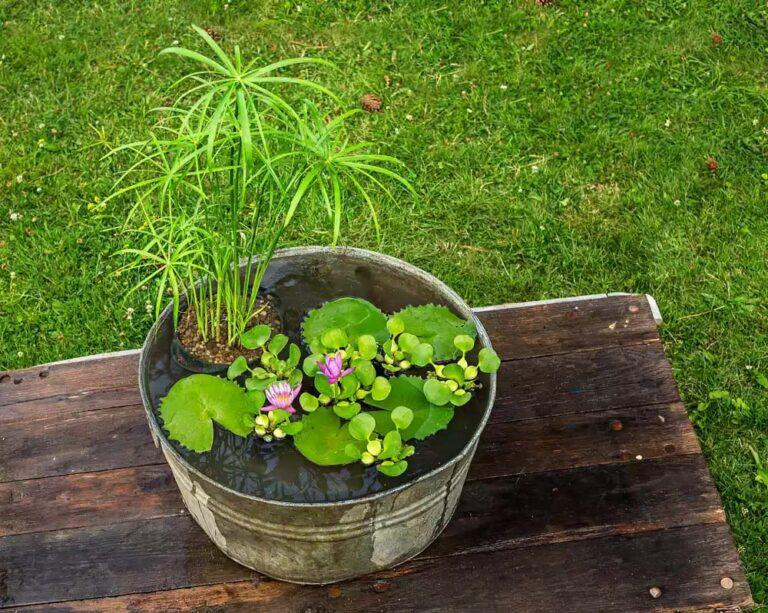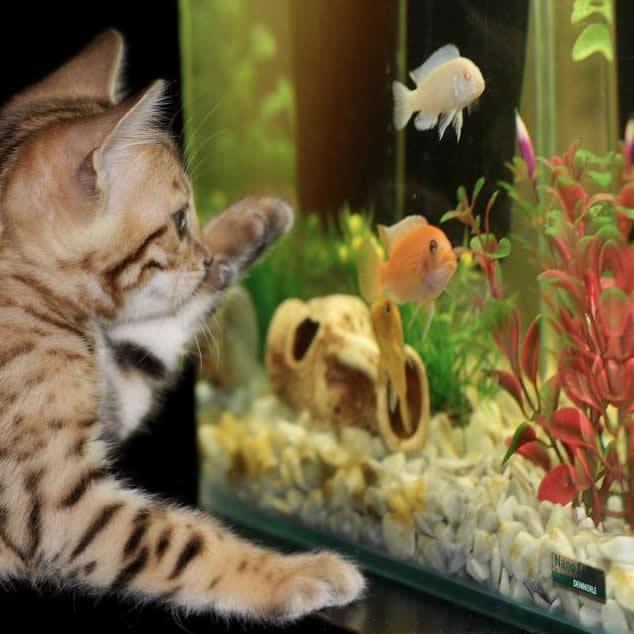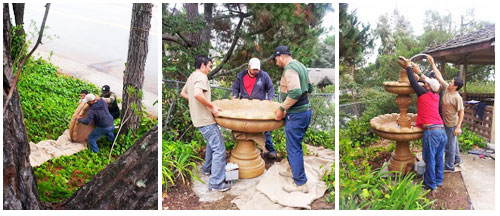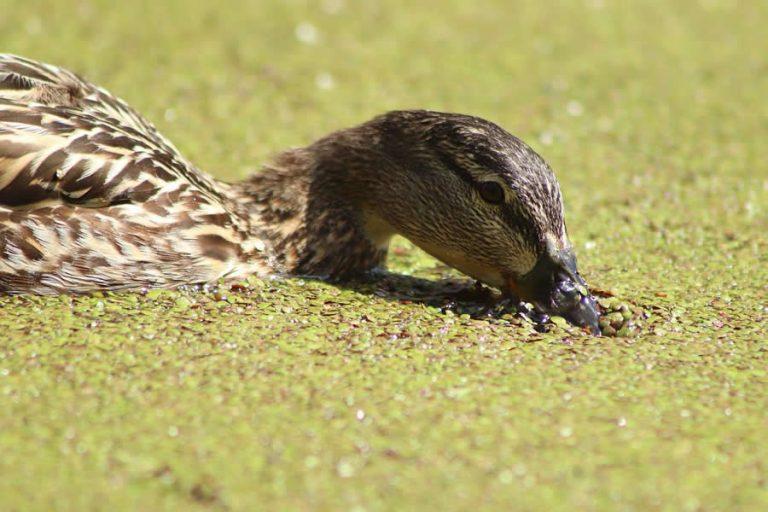How To Choose A Water Lily: A Guide For Beginners
 Water Lilies are the aristocrat of the water garden pool. Being over a century old, Tricker’s has established their reputation of knowing how to correctly identify the water lily species and hybrids and will label the aquatic plants correctly so that you receive the plant that you want.
Water Lilies are the aristocrat of the water garden pool. Being over a century old, Tricker’s has established their reputation of knowing how to correctly identify the water lily species and hybrids and will label the aquatic plants correctly so that you receive the plant that you want.
There are Tropical and Hardy varieties. The following chart compares the general characteristics of the Hardy and Tropical varieties.

Water Lily Hybrids. Water gardeners prefer hybrid plants because the are easy to grow and showy. Many of Tricker’s water lily hybrids were developed at our nursery and stood out among the best in the industry for decades. Tricker’s was the exclusive distributor of the Pring tropical water lily hybrids when they were introduced years ago. We offer many water lilies hybridized by the famous M. Marliac. The water lily pioneers and many of these select hybrids are described in the book Tricker’s 1101 Water Gardening Questions and Answers.
Over the past 100 years, Tricker’s developed techniques to provide you with a quality water lilies directly from us that will be successfully planted to grow and prosper in your water garden pond. Our goal is for our customers to enjoy varieties of water lilies.
Here is a list of characteristics of water lilies for you to understand when designing your water garden.

- Spreads: This is how far the pads reach beyond the blossoms. Most will spread 2-3 feet when planted into large containers. If the same water lily is planted into an extra large container, then it can spread farther.Some pygmy water lilies can spread less than 2-3 feet when planted in a smaller container. The pygmies are selected for tub gardening or for that special place in your water garden pool that needs a smaller coverage water lily.
- Sunlight Requirements: Most water lilies require at least 4-6 hours of sunlight per day. Tricker’s nurseries have developed some varieties that can bloom with reduced light. Some examples are the tropical water lilies ‘Patricia’, ‘Independence’, ‘Janice’, ‘Blue Bird’, ‘Panama Pacific’, ‘August Koch’, and ‘Dauben’.Those tropical water lilies require are known for growing and blooming long into the fall or autumn when all other water lilies are going dormant.Hardy varieties typically require full sunlight.
‘Independence’ tropical water lily ‘Janice’ water lily ‘Blue Bird’ water lily ‘Panama Pacific’ blue tropical water lily ‘August Koch’ water lily - Flower Colors: The tropical water lilies come in all colors of the rainbow and are especially known for the class of blue and purple flowers that are not found in the hardy varieties (not including the ISG hardy water lilies). These colors are found in many dark to light shades with many different appearances.
- Blooming Characteristics: Tropical water lilies produce more blooms than the hardy variety. The tropical water lilies will produce a multitude of flowers all summer long that stand high above the water surface!The hardy variety with flowers floating on the surface of the water, will prepare for winter by making a tuber and reduce blooms as fall approaches. There are many hardy hybrids that are extremely beautiful and produce a wonderful amount of flowers during the year.Growing both hardy and tropical water lilies can result in a full summer of water lily blooms in your pond.
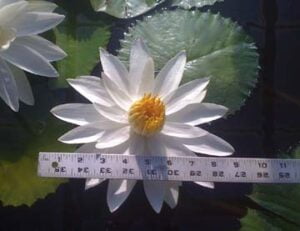
‘Sir Galahad’ Water Lily is one of our water lilies with the largest flowers at about 9″ diameter. ‘Sir Galahad’ will open in the late afternoon when other water lilies are closing for the night. ‘Sir Galahad’ will be open the next morning before the day blooming lilies open!
- Growth Rates: The tropical water lilies will grow rapidly during the summer months under the right conditions.In very hot summers, hardy water lilies will experience slow growth.Fragrances: Tropical water lilies are extremely fragrant will emit a wonderful aroma. Many water gardeners cut the flowers and float them in a bowl of water indoors. The sight of the blossoms and fragrance indoors is wonderful throughout.Many hardy water lilies produce a slight, characteristic odor but are not known for their fragrances. Cut hardy water lily blossoms can still be enjoyed floating in a bowl of water indoors.
- Fertilizers: Water lilies require fertilization for the best blooms and fragrance. Tricker offers two types of aquatic fertilizer:
- A proven granular aquatic fertilizer, Tricker’s Praefecta, is mixed into the soil when planting and gives the water lily a good growing root and flower foundation. It is highly recommended that the topsoil contains clay that acts as a magnet to hold and attract nutrients from the water.
- If your soil does not have clay, Tricker’s offers a product similar to clay, AMT which can be added to the topsoil. The water-soluble pellet fertilizer, Trico, should be added throughout the season that results in more leaves and blossoms. Water lilies will typically go into a dormancy if they are not adequately fed.
- Night Blooming Water Lilies: Only tropical varieties of night blooming water lilies are available. Other tropical and the hardy water lilies will close during the late afternoon and into the night and open in the later part of the morning as the sun wakens them.The tropical night bloomers open late in the day and close early the next morning depending upon sunlight and clouds. You’ll see the beautiful water lily blossoms before going to work in the morning and when you come home.If you don’t have night bloomers and work during the day, you will enjoy the water lily blooms of day bloomers only on your days off. Tricker’s offers collection of day and night bloomers that have showy open blossoms 24 hours.The opened blossoms on a full moon night are a sight to behold. If you never grew a night bloomer, try one and you will be pleasingly surprised at its beauty. Plant them in a large crate for large blossoms. They can outgrow a hardy water lily as well as a tropical day blooming water lily.
- How early in the Spring can the tropical water lilies be planted in an outdoor water garden pool? How early the plants can be set into your pond depend on (1) water temperature and (2) sunlight.Tropical water lilies grow best in water that is at least 70°.The length of daylight (photoperiodism) that slowly increases during the year in Spring, is considered for developmental growth and producing blooms.At latitudes of Chicago, Cleveland, and New York City, the best time to plant tropical water lilies in an outdoor pool is around the first week of June when warmer temperatures are stable and the sun is optimum for growth and blooms.A common mistake is to plant too early if the warm weather is above average because the temperature will drop. Your water lilies can either be stunted or die.Because the tropical water lily is an extremely fast grower, a slight delay in planting during a warm spell is not worth the risk since it is often normal for average cooler temperatures to return. Tropical water lilies will bloom later in the autumn than the hardy water lilies which are preparing for winter.
- How late in the year can the water lilies be planted? Tropical water lilies may bloom until the frost arrives in the northern areas. If you want blooms later in the year then tropicals are suited for that. In the northern climates, the tropical water lilies may bloom in October.In northern areas, hardy water lilies start their dormancy in late summer and can be transplanted in late fall. By planting a hardy in the latter part of summer, the next spring nature will be ready to stimulate its growth.
- Overwintering Water Lilies: In cooler climates, it’s not recommended to overwinter tropical water lilies.
Hardy water lilies are overwintered by not allowing the tuber/roots to be frozen. The water lily in the container should be lowered to a deeper section of the pool that will not freeze. Alternatively, bring the container with the plant indoors in a container of water to keep it wet until spring.If overwintering your hardy water lily, the flowering and pad growth changes each year. They may stop blooming, become pot bound, and can be subjected to “crown rot”. To prevent that, divide the tuber to keep the the plant strong and viable.Other factors considered in overwintering include the soil; water quality; bacterial, viral, fungal infections, and so forth. Thus, some hardy varieties do better in some locations than others. Note:The newer classified ISG hardy water lilies (cross of a hardy and tropical water lily) that may or may not be treated as the regular hardy water lilies. There may, in the future, be other attributes to wintering techniques or limits that may develop over the years with this newer class of water lilies as they are grown throughout the US.
- Pad Appearance: The pad design, color, shape, etc is a factor in choosing the best water lily for your display. The unusual differences in pads adds special features to your water garden design.Some pads are a solid green whereas other are mottled with green and a dark color and are obvious in the tropical water lilies. For example, ‘Leopardess’ has dark mottling on the pads. In 2014, William Tricker, Inc. introduced one of the most mottled pads in the industry, ‘Pink Sapphire’. The gorgeous pink flowers of ‘Pink Sapphire’ make it attractive against the heavily mottled pads.

1. Smooth or Entire Margin around the Pads. This water lily image is the famous ‘Attraction’ hardy water lily. Most hardy water lilies and many tropicals have this characteristic.
2. Serrated Margin around the Pads. The serrated or toothed margin is in tropical night bloomers as the ‘Antares’.
3. Speckled Mottled Pads. ‘Bagdad’ water lily has this feature.
4. Mahogany Pads. ‘Red Flare’ has delightful mahogany pads with serrated margins.
5. Multiple Colored Pads. The pads are all different with hues of pink, white, and green blotches. ‘Arc-en-Ceil’ water lily has this type pad.
6. Mottled Pads. Many tropical water lilies have mottled pads as the ‘Leopardess’ water lily.
7. Pink Margin around Pads. The ‘Pink Halo’ water lily has a pink margin around the forest green pads.
8. Strikingly Mottled Pads. The ‘Pink Sapphire’ water lily has this type of pad.
9. Wavy Margins. The pad is a beautiful green with a wavy margin. The pad doesn’t lie flat on the surface of the water but will show a ripple-like effect. ‘Mrs. C. W. Ward’ water lily has this type of pad.
We hope you learned something about choosing a water lily and
look forward to you having the best water garden in your neighborhood.
